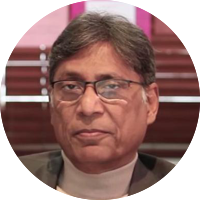Muunni Bai Hijab and Dagh Dehlavi
Munni Bai “Hijab” was a courtesan from Calcutta. She hapeened to visit the famous Benazir fair of Rampur where she met Dagh Dehlavi (1831-1905). She was a poet and liked Dagh’s poetry. Dagh, being a poet himself and a man of romantic disposition, also fell for her. Hijab stayed for some time in Rampur but once the fair was over, she had to leave. She did leave but left a lover behind pining for her. As they separated they took vows to remain committed in their love and keep in touch through letters. They also exchanged poetry which described their pining for each other. She came again to Rampur fair the following year and both the pining lovers met again but only for a few days. Later, she invited Dagh to Calcutta. He went there and found a place for himself and stayed there for a few months. He went to Calcutta yet again after a longer period of time and tried to find her whereabouts. He came to know, to his utter dismay, that Munni Bai, the courtesan, had chosen a maulvi (or the maulvi had chosen her) for entering into a marital relationship. Munni Bai had turned religious and distanced herself from the old ways of her life. This shocked him and he suffered immeasurably as he could not meet her. Dagh even asked a close acquaintance to persuade Munni Bai to divorce her husband and marry him. He also said that he had grown old but his love was as young as ever. Their curious relationship remained in this state for long. During the entire period they had three stints of meeting but Dagh’s love for Munni Bai did not fade out. Munni Bai wrote a matter-of-fact letter to him which had no trace of love in it. She demanded nikah with him and a home for herself. A totally shaken Dagh knew no way of resolution. The story seemed to be over but a few years later, an old Munni Bai surfaced again and reached Hyderabad to meet Dagh. He made arrangement for her stay in a different house and paid for all her expenses. He was still enamoured by her and wanted to enter into wedlock but it was strongly opposed by his daughter, son-in-law and friends. Soon, they grew bitter and started hating each other. A broken Munni Bai was left with no other option but to return to Calcutta. Dagh grew more and more miserable with each passing day. He fell ill in September 1904 never to be cured. He passed away in September 1905, leaving behind a treasure house of poetry and an empty coffer of an illusory love story.
Reference: Dagh’s masnawi called Faryaad-e Dagh: https://www.rekhta.org/ebooks/fariyad-e-dagh-dagh-dehlvi-ebooks/
Munni Bai “Hijab” was a courtesan from Calcutta. She hapeened to visit the famous Benazir fair of Rampur where she met Dagh Dehlavi (1831-1905). She was a poet and liked Dagh’s poetry. Dagh, being a poet himself and a man of romantic disposition, also fell for her. Hijab stayed for some time in Rampur but once the fair was over, she had to leave. She did leave but left a lover behind pining for her. As they separated they took vows to remain committed in their love and keep in touch through letters. They also exchanged poetry which described their pining for each other. She came again to Rampur fair the following year and both the pining lovers met again but only for a few days. Later, she invited Dagh to Calcutta. He went there and found a place for himself and stayed there for a few months. He went to Calcutta yet again after a longer period of time and tried to find her whereabouts. He came to know, to his utter dismay, that Munni Bai, the courtesan, had chosen a maulvi (or the maulvi had chosen her) for entering into a marital relationship. Munni Bai had turned religious and distanced herself from the old ways of her life. This shocked him and he suffered immeasurably as he could not meet her. Dagh even asked a close acquaintance to persuade Munni Bai to divorce her husband and marry him. He also said that he had grown old but his love was as young as ever. Their curious relationship remained in this state for long. During the entire period they had three stints of meeting but Dagh’s love for Munni Bai did not fade out. Munni Bai wrote a matter-of-fact letter to him which had no trace of love in it. She demanded nikah with him and a home for herself. A totally shaken Dagh knew no way of resolution. The story seemed to be over but a few years later, an old Munni Bai surfaced again and reached Hyderabad to meet Dagh. He made arrangement for her stay in a different house and paid for all her expenses. He was still enamoured by her and wanted to enter into wedlock but it was strongly opposed by his daughter, son-in-law and friends. Soon, they grew bitter and started hating each other. A broken Munni Bai was left with no other option but to return to Calcutta. Dagh grew more and more miserable with each passing day. He fell ill in September 1904 never to be cured. He passed away in September 1905, leaving behind a treasure house of poetry and an empty coffer of an illusory love story.
Reference: Dagh’s masnawi called Faryaad-e Dagh: https://www.rekhta.org/ebooks/fariyad-e-dagh-dagh-dehlvi-ebooks/
Additional information available
Click on the INTERESTING button to view additional information associated with this sher.
About this sher
rare Unpublished content
This ghazal contains ashaar not published in the public domain. These are marked by a red line on the left.

